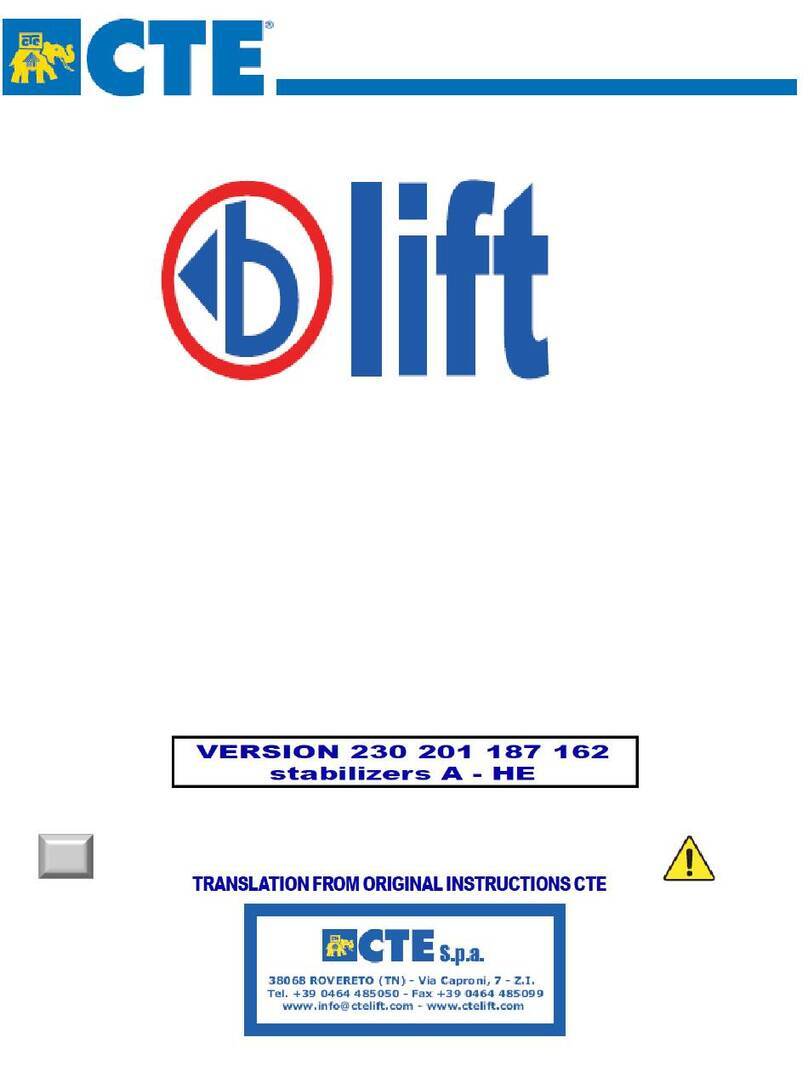
Instructions for Use
and Maintenance
Sezione Main Index
General index
Section A
Information on the manual
Introduction ............................................................ 2
Storage .................................................................. 3
Intended user ......................................................... 3
Personnel for whom this manual is intended ........... 3
Topics not addressed ............................................. 3
Composition of the manual ..................................... 4
Information for the buyer ......................................... 5
Warnings ............................................................... 6
Glossary ................................................................ 7
Section B
Safety
The EC directives consulted ................................... 2
Conformity ............................................................. 2
Normative references .............................................. 2
Foreseen and unforeseen use ................................ 3
Intended use .......................................................... 3
Unauthorised uses ................................................. 3
Road traffic ............................................................. 4
Residual risks and dangers .................................... 5
During use of the lifting platform ............................. 5
Operator training .................................................... 6
Operators’ task ...................................................... 6
Training and importance of the procedures ............. 6
Brief outline of directive EC/89/391 ......................... 7
Definition of the operator positions .......................... 8
Operators’ tasks .................................................... 10
Personal protection equipment (PPE)..................... 11
Dangerous areas .................................................... 12
Risks for persons exposed ..................................... 13
Dangers for the persons exposed ........................... 13
Safe workplace ....................................................... 14
Type of workplace................................................... 14
Placing the machine .............................................. 14
Delimitation of the operating area boundary ............ 14
Electrical tolerances .............................................. 15
Vibrations and impact ............................................ 15
Contaminants ......................................................... 15
Ionising and non-ionising radiation .......................... 15
Lighting a “normal” setting ...................................... 16
Noise risk............................................................... 16
Section C
Description and Technical Data
Main parts - Platform .............................................. 2
Orientation ............................................................. 3
Identification ........................................................... 4
Main data plates .................................................... 5
Description and ...................................................... 7
Technical Data ....................................................... 7
MACHINE DIMENSION AND WORKING AREA ...... 9
Section D
Controls
Stabilising controls ................................................. 2
Controls - frame station .......................................... 3
Main controls - basket station ................................ 7
Stabiliser controls at the station in the basket (opt.) 10
Cabin controls ........................................................ 11
Auxiliary electrical motor control panel (Optional) ... 12
Section E
Safety devices
Emergency buttons ................................................ 2
Moment limiting device (MC2M) ............................. 3
WARNINGS ........................................................... 4
ALARMS ................................................................ 5
Buzzer ................................................................... 7
Outriggers and/or beams out of position ................. 8
Stabiliser interblocking ........................................... 9
Elevating Operations Consent ................................ 10
Basket balancing ................................................... 11
Control system chain tension adjustment ............... 12
Manual emergency pump ....................................... 13
Safety harnesses ................................................... 14
SectionE1
Optional
Electrical outlets - optional ..................................... 2
Revolving working light ............................................ 3
Auxiliary service systems ...................................... 4
Electrical auxiliary motor ........................................ 5
Battery charger ...................................................... 6





























